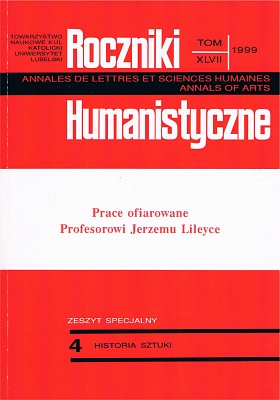Return of Still Life
Abstract
Paweł Dadlez (1907-1940) is not a very well-known painter. The output he has left is varied and, one could say, not quite defined. This was decided by his biography: after studies at the Cracow Academy of Arts and a few years of teaching he took part in the war, which resulted in his being put in a camp where he came to an untimely end because of emaciation.
Among the works that he left there is, however, a fascinating picture that now belongs to the National Museum in Cracow – In the kitchen (undated). It follows the best traditions of modern painting, mainly to the works by masters of still life, such as Chardin or the Le Nain brothers. Dadlez's painting became a source of inspiration for the contemporary Polish painter, Grzegorz Bednarski. Bednarski (born in 1954) studied in the Cracow Academy of Arts in the years 1975-1980. He is numbered among the so called “krakowska figuracja” (Cracow figuration); he was very active in the 1980s taking part in the movement of “independent culture”. He exhibited, mainly in churches, first of all expressive, big size canvases with the motif of a badly misshapen human figure. However, in the 1990s under the influence of Dadlez he created a cycle of works that are different from those ones in many respects. They are still lifes with a few recurring elements such as a scull, mug or knife. The juxtaposition of everyday, usual objects and a scull that is a symbol of fragility of human life connects these paintings with the motif of vanity. It is stressed with cool, bluish colours sometimes counterpointed with patches of red. Bednarski's compositions are part of the many-century tradition of still life, which is a rare phenomenon in contemporary art.
Copyright (c) 1999 Roczniki Humanistyczne

This work is licensed under a Creative Commons Attribution-NonCommercial-NoDerivatives 4.0 International License.





